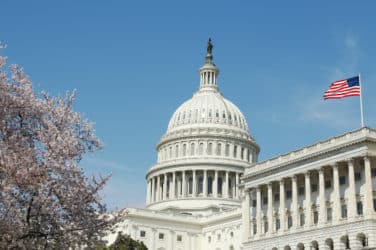
Data was a common theme at the FIX Trading Community EMEA Conference in London today, being mentioned even more than Brexit.
Getting ready to speak at #FIXEMEA2018 with @AMF @TheFCA and @AFM pic.twitter.com/pWhctAZM68
— Rebecca Healey (@_RebeccaHealey) March 15, 2018
Issues raised were the lack of a consolidated tape in the European Union, the quality of trade reporting – particularly data from systematic internalisers, and the high cost of market data in the region.
MiFID II, the regulation which came into force in the EU in January, strengthened the requirements to evidence best execution. However there is no consolidated tape in the region and traders have to monitor prices across individual venues which increases fragmentation and cost. The EU is currently trying to enact a Capital Markets Union which aims to lower the cost of investment and attract more capital into the trading bloc.
“The cost of market data is ludicrously high in Europe, it should be 50 times cheaper,” said one panellist.
A previous commercial venture to launch a European consolidated tape, the Coba Project, failed in 2013 due to insufficient support from banks, fund managers, data providers and stock exchanges.
MiFID II also introduced pre-trade transparency requirements and post-trade transaction reporting. It was agreed that the quality of data needs to be improved, particularly with regard to systematic internalisers. The regulation prohibits broker crossing networks and instead required firms to set up SIs. However, there is no central register of SIs, addressable liquidity at SIs cannot be identified and there is also double counting of some trades.
In order to strengthen best execution, MiFID II has unbundled payments for research, which have traditionally been combined into trading commissions. One panellist said: “Old research has become data.”
In addition, the buyside wants research to be available in machine readable formats, together with the data underlying any models. Another panellist said: “The use of non-traditional research has increased over the last 10 to 15 years.”
MiFID II also introduces double volume caps on trading in dark pools which went live at the start of this week, and are intended to boost volumes on lit venues.
58% does not support objective to increase trading on lit markets #FIXEMEA2018
— Shanny Basar (@shannybasar) March 15, 2018
More than 750 stocks have been suspended from being traded in dark pools for six months as they have exceeded the limit of 4% of total volume on a single venue in the past 12 months and 8% combined across all EU dark pools.
Market participants felt the introduction of the caps had gone smoothly with no disruptions to trading, but it is too early to tell how trading patterns have changed and whether there will be a shift to more trading on lit venues.
Consensus seems to show that double volume cap suspensions have had virtually no impact on markets ? #FIXEMEA2018 #MIFIDII
— incurable optimist (@CityInsideOut) March 15, 2018
Right now data shows trading not changed due MiFID II – still 75% on venues and 25% OTC, SIs still 1.4% of OTC #FIXEMEA2018
— Shanny Basar (@shannybasar) March 15, 2018
There has been an increase in volumes in periodic auctions on lit venues. However one panellist warned that regulators will not continue to allow broker preference and price taking in auctions as this is really dark trading.
“If end investors want a revolution then it will happen,” he added. “They want better and fuller transparency and that will only come through data.”
However, although data had become more important to the buyside, venues have been raising the cost of market data.
One panellist added: “The buyside needs new innovative tools for analysing data. The winners will those who innovate the best and provide real-time analytics.”






